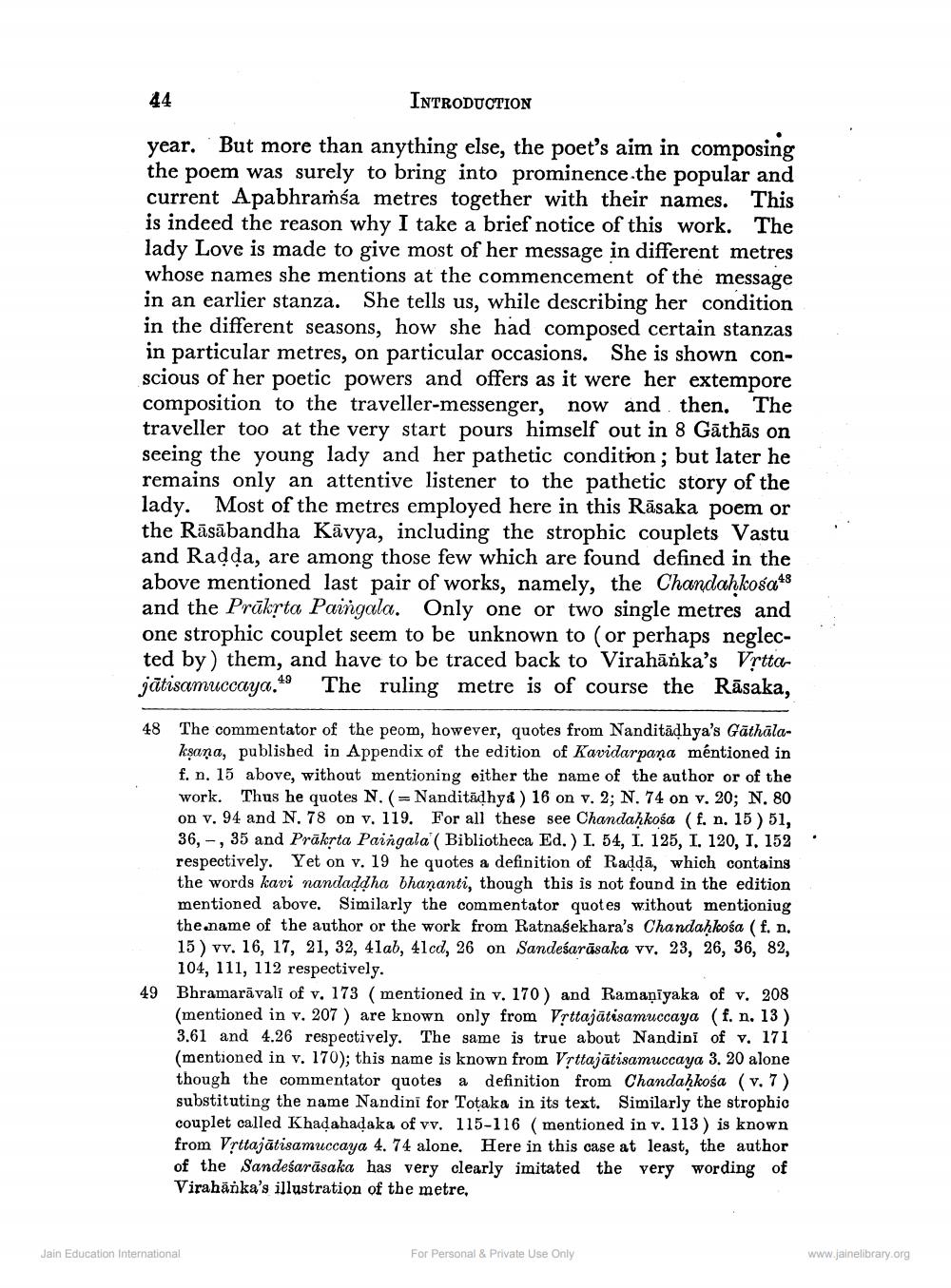________________
44
INTRODUCTION
year. But more than anything else, the poet's aim in composing the poem was surely to bring into prominence the popular and current Apabhramsa metres together with their names. This is indeed the reason why I take a brief notice of this work. The lady Love is made to give most of her message in different metres whose names she mentions at the commencement of the message in an earlier stanza. She tells us, while describing her condition in the different seasons, how she had composed certain stanzas in particular metres, on particular occasions. She is shown conscious of her poetic powers and offers as it were her extempore composition to the traveller-messenger, now and then. The traveller too at the very start pours himself out in 8 Gāthās on seeing the young lady and her pathetic condition; but later he remains only an attentive listener to the pathetic story of the lady. Most of the metres employed here in this Rāsaka poem or the Räsäbandha Kavya, including the strophic couplets Vastu and Radda, are among those few which are found defined in the above mentioned last pair of works, namely, the Chandakosa and the Präkṛta Paingala. Only one or two single metres and one strophic couplet seem to be unknown to (or perhaps neglected by) them, and have to be traced back to Virahanka's Vṛttajatisamuccaya, The ruling metre is of course the Räsaka,
49
48 The commentator of the peom, however, quotes from Nanditaḍhya's Gathalakana, published in Appendix of the edition of Kavidarpana mentioned in f. n. 15 above, without mentioning either the name of the author or of the work. Thus he quotes N. (- Nanditaḍhys) 16 on v. 2; N. 74 on v. 20; N. 80 on v. 94 and N. 78 on v. 119. For all these see Chandaḥkosa (f. n. 15) 51, 36,-, 35 and Prakṛta Paingala'( Bibliotheca Ed.) L. 54, I. 125, I. 120, 1, 152 respectively. Yet on v. 19 he quotes a definition of Radda, which contains the words kavi nandaddha bhananti, though this is not found in the edition mentioned above. Similarly the commentator quotes without mentioniug the name of the author or the work from Ratnasekhara's Chandaḥkosa (f. n. 15) vv. 16, 17, 21, 32, 41ab, 41ed, 26 on Sandesarāsaka vv. 23, 26, 36, 82, 104, 111, 112 respectively.
49 Bhramarāvali of v. 173 (mentioned in v. 170) and Ramaniyaka of v. 208 (mentioned in v. 207) are known only from Vṛttajatisamuccaya (f. n. 13) 3.61 and 4.26 respectively. The same is true about Nandini of v. 171 (mentioned in v. 170); this name is known from Vṛttajatisamuccaya 3. 20 alone though the commentator quotes a definition from Chandaḥkośa (v. 7) substituting the name Nandini for Toṭaka in its text. Similarly the strophic couplet called Khadahadaka of vv. 115-116 (mentioned in v. 113) is known from Vṛttajatisamuccaya 4. 74 alone. Here in this case at least, the author of the Sandesarasaka has very clearly imitated the very wording of Virahanka's illustration of the metre,
Jain Education International
For Personal & Private Use Only
www.jainelibrary.org




